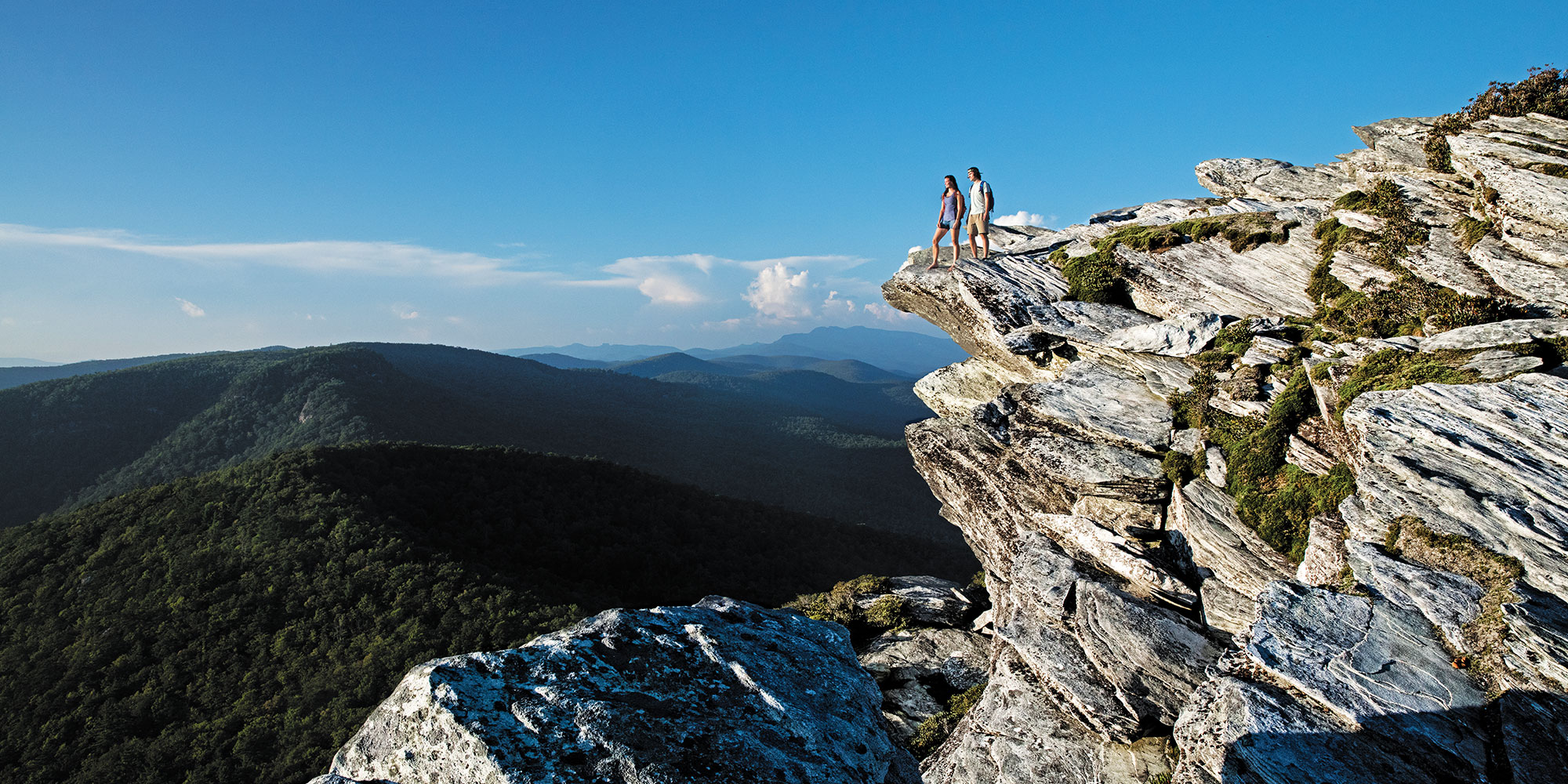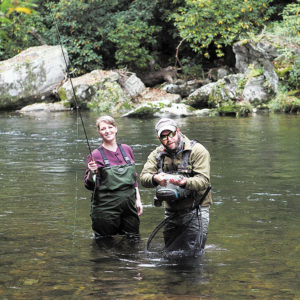Originally published in TAMPA Magazine in May of 2018
As the summer months approach, Tampa’s affluent residents beat a much-trodden path out of the heat, humidity and Florida flatlands. Their destination? Places with a lot more peaks and far less mercury on the thermometer. Many migrate to homes they own or rent in the mountains to the north and west — primarily in the close, but not too close, western North Carolina mountains. Because large numbers of Tampa Bay-area residents have made this a tradition for decades, we decided to speak with a few who have made the region their primary getaway and summer home location, to get tips on renting or taking the plunge and buying a mountain home.
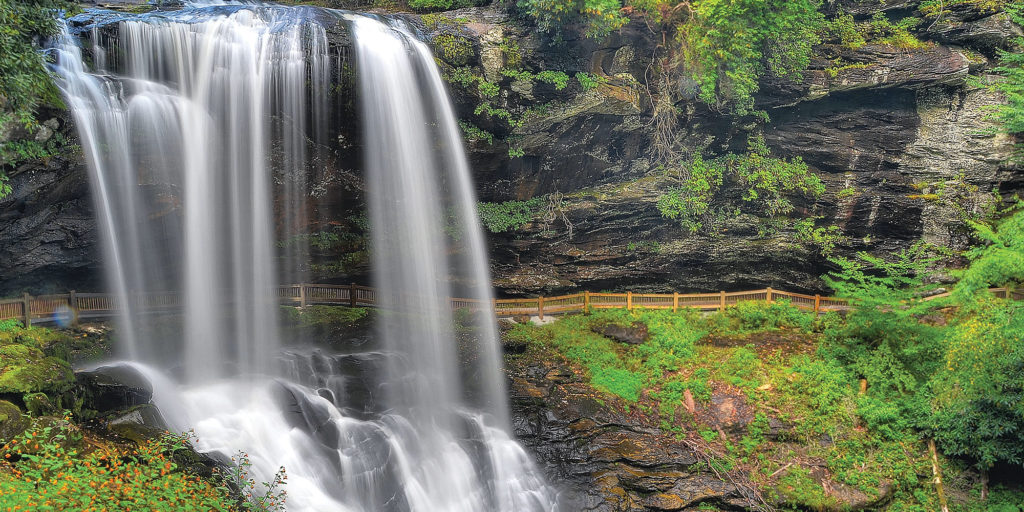
With the possible exception of Alaska, there are few places less like Tampa in the summer than the area around Highlands and Cashiers, North Carolina. For one, the average high temperature between June and August is 78 degrees, with nighttime temperatures in the mid-50s. The average elevation ranges from around 3,000 feet to over 4,000 feet; Tampa’s average elevation is 48 feet above sea level.
Because of these major differences, Wanda Klodosky, a lead broker at Landmark Realty Group’s Highlands office, suggests spending a week at a hotel or vacation rental to see if the region is the right fit for you if you are considering a permanent commitment to the area.
“Meeting with a realtor to get an overview of the available properties would then be a good next step,” she adds. “If nothing immediately jumps out at you as a good choice, then I’d encourage a longer term vacation rental period before making a purchase.”
Third-generation Tampa native Pat Hill now spends the majority of the year at his home in Whittier, North Carolina, which he has owned for more than 40 years. The president emeritus of marketing and consulting firm HCP Associates says getting to know the area and analyzing your own wants and needs are crucial to making any kind of mountain real estate decision, particularly deciding between buying in a gated community — an increasingly popular decision — or purchasing your own lot.
“You need to decide what kind of lifestyle you want,” Hill says. “You may be more comfortable in the country club setting, or you may like being more remote, but you need to experience that first. I’ve known people who have gotten uncomfortable at a club because it was like liv-ing the city life in the mountains. Others have bought a cabin because it was quaint, but they didn’t enjoy having to drive 30 minutes to the grocery store.”
Hill’s cottage, which sits 3,900 feet up, is located in a more remote area of the mountains, providing an experience quite different from country club living.
“There are acres of land and trails nearby, and it’s an environment where we can take advantage of the mountains,” he says. “It’s just a different lifestyle. It’s nice to not have neighbors right next door, but we can still visit the club [we belong to] whenever we want.”
For some, the conveniences that come with country club living outweigh the independence found in more far-flung areas, including Lakeland resident James McMahan, the chairman of American Resurgens Management. He and his wife have regularly vacationed in the the North Carolina mountains for more than a decade and now own a home at Mountain Air Country Club in Burnsville, near Asheville.
“With the services you get, starting with security at the front gate to the maintenance of the common areas and external home maintenance, there’s a lot you don’t have to take care of yourself,” he says. “Many don’t want to go to their vacation home and have to fix it up and clean it up themselves.”
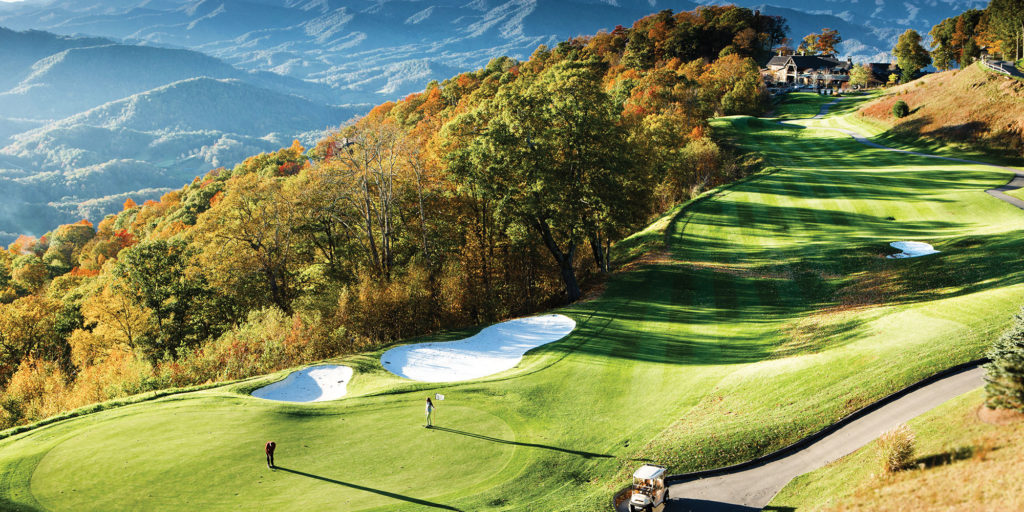
Clubs often also offer luxurious amenities like golf, upscale restaurants and wifi (which, McMahan adds, was just installed last year), plus a built-in social network.
“The camaraderie of all the neighbors is great,” McMahan says.
Another Lakeland resident, Parkhill Mays — a partner with the law firm Holland & Knight — spends a few months out of the year at a home on Highlands’ Mirror Lake that his family built in the late 1940s. In 2010, he renovated the home from top to bottom, leaving the original hard redwood paneling and rockwork while adding a third story, replacing the roof and flooring, and rehabbing the interior pine panel-ing. For him, the tradition of multiple generations spending time in the house makes the work of maintaining his own property fun.
“The home brings back fond memories,” Mays says. “Every year you have something to do. [A few years ago], we put in an elevator that goes to the house from where we park the car, 11 feet down.”
For people looking to buy in the western North Carolina mountains, broker Wanda Klodosky says the area is currently a buyer’s market. Most buyers are requesting a style of home she calls “mountain chic.”
“Buyer requests are varied,” she says. “Some want very rustic decor but with modern appliances. [Most] want shiplap paneling, easy-care hardwoods, and kitchens and bathrooms similar to what you would find in any city.”
To help decide between purchasing a home on its own lot or behind gates, Klodosky suggests speaking with the president of the homeowner’s association and the general manager of the country club to get a feel for what the community offers.
“Weigh the value of the amenities received versus what you would have to pay to achieve a similar quality of life if you build your own home or purchase outside of a gated community,” she says.
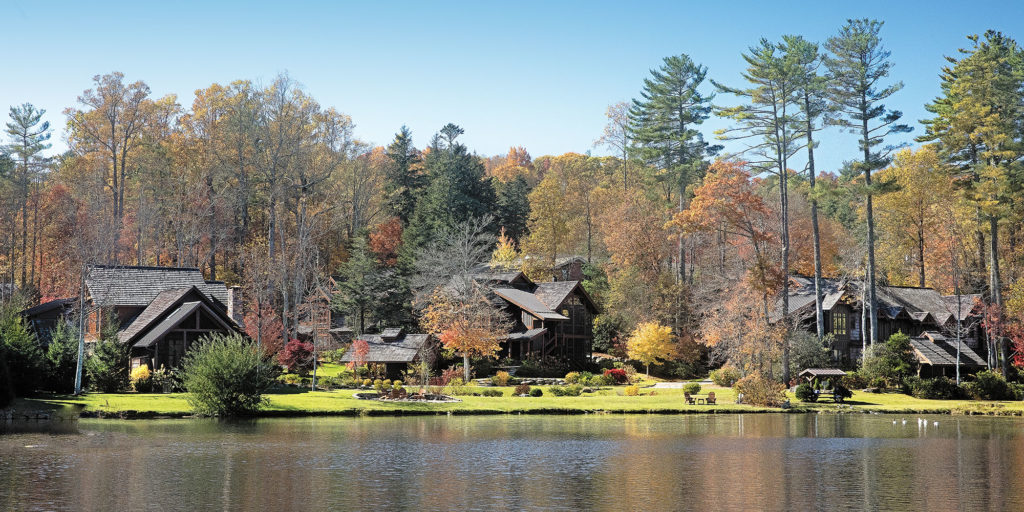
Neither McMahan, Mays nor Hill rent out their homes while they’re away, mostly to allow for impromptu trips, the convenience of leaving a second set of tools, clothing and other belongings year-round, and to prevent unnecessary wear and tear on the house. If you do rent out your property, Hill says there are some common mistakes to avoid.
“Don’t assume the rent [you collect] will cover all of your expenses the rest of the year,” he says. “Rental season is getting longer, so you may not be able to use your home whenever you want.”
All three men hire cleaning services, handymen or other individuals to check in on their empty homes regularly. Klodosky advises this as well, though not necessarily for security purposes.
“The crime rate in our area is quite low,” she says. “A potential limb on the roof or a pipe not completely drained would be a more likely scenario than a burglary.”
Beyond safety, the chance to escape the pace of city life, along with the oppressive heat and humidity of central Florida during the summer, is too strong a draw for many Tampa-area residents to resist.
“Highlands is a charming place,” Mays says. “Sit back and enjoy your screen porch and the cool air. We rarely have the air conditioning on even in August, and a change of scenery is always good.”
“The views are fabulous,” adds McMahan. “I just feel very comfortable in the mountains. The topography is one thing we don’t have here [in the Tampa Bay area].”
While most Floridians begin thinking about making a second home in a more temperate area of the country as they approach retirement, Hill suggests doing the opposite.
“If you discover that you really like the mountains and want to come up here, don’t put it off too long,” he says. “We know many people who talked from about age 30 to age 50 about getting a place up here, and they never did it. Every year people visit us and say someday they’ll have a place here. I say, do it now. You’ll have more time to enjoy it.”
After all, you’re never too young (or old) to appreciate just a bit of peace, quiet and cool mountain air.
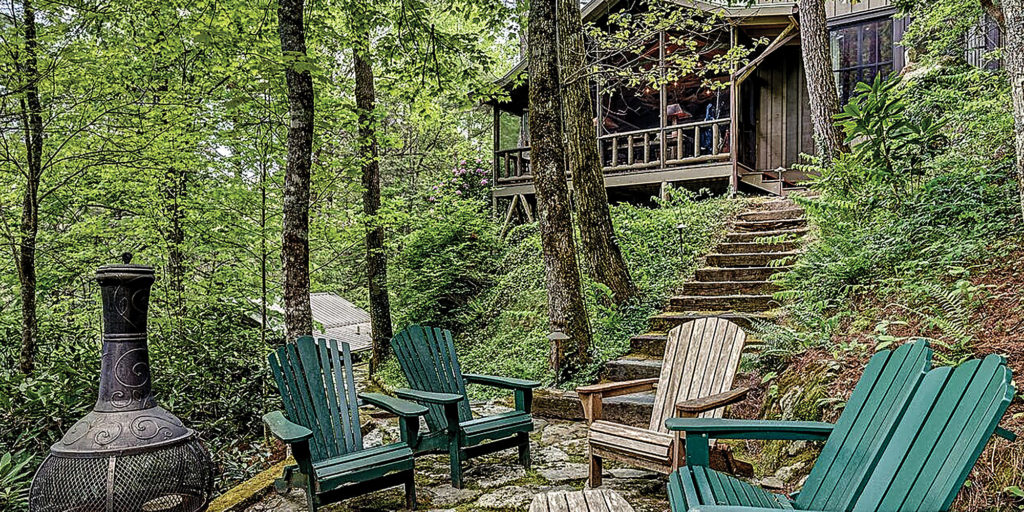
What to Know
There are many considerations to owning a home in the mountains that a typical Floridian may not anticipate. Here’s what our sources said to keep in mind.
– “Air conditioning and a screened porch are not the same urgent requirements in our area that they are in Florida,” Wanda Klodosky says. “It’s a nicety rather than a necessity.”
– You will need a septic tank, a well or some other community water source, Klodosky adds, and you will be using propane gas tanks rather than natural gas.
– In the winter, make sure your water is turned off, and drain your pipes. Be sure to have the proper tires on your car and have your driveway and roadway cleared if you live in a more far-flung area.
– Animals can be a problem, so be sure to ask about trash removal.
– While the gravel roads through most of the mountain areas are safe, they can be a bit tricky to navigate for someone who’s used to highway driving, so be prepared for narrow roads and tight corners.
– Don’t feel obligated to buy a bigger property than is suited for you. “Buy what you need now, not what you may need someday,” Pat Hill advises.
The Great Outdoors
Enjoying outdoor activities without unrelenting sun is an obvious plus to the mountain area. Here are some of the best ways to explore nature throughout the Highlands/Cashiers region.
Get lost (not literally) in the natural splendor of the Great Smoky Mountains National Park, a UNESCO Heritage Site, on the North Carolina-Tennessee border. Fish, hike bike, and explore historic burial sites that bring the region’s past to life (photo: Justin Mier). | Hiking is big: Trails on Whiteside Mountain and at Glen Falls are popular for the views (photo: Chip Henderson/visitnc.com).
For more on golf in the North Carolina mountains, click here (photo: visitnc.com). | For motorcyclists, Mays recommends a ride on the Blue Ridge Parkway, which runs most directly through Asheville (photo: Bill Russ-visitnc.com)
Brook, rainbow and brown trout fishing is plentiful in the Cullasaja River (which also features multiple waterfalls) and its surrounding streams and creeks (photo: visitnc.com).
Where People Are Buying
Landmark Realty Group’s Wanda Klodosky says across the firm’s four offices on the Highlands-Cashiers plateau, newer constructed homes with high quality views are the hottest properties. “The in-town, walkable Highlands area is the top request in our Highlands office,” she says. “Our Lake Toxaway and Sapphire Valley office has requests for top-level Lake Toxaway properties, while the Cashiers office primarily gets request for properties on Lake Glenville and properties close to the Crossroads,” the intersection of US 64 and Highway 107 that is less than a mile from the main shopping, dining and recreation destinations.
Where to Eat
Highlands
Wild Thyme Gourmet (343 Main St, Highlands, wildthymegourmet.com)
This self-described Asian-American fusion spot is a bit unique in its neck of the woods, so to speak. You’ll find appetizers like fried green tomatoes next to spicy Thai shrimp, plus interesting combinations like bacon-wrapped quail and local dishes, like pan-seared trout from the North Carolina mountains. Don’t miss the long (long, long) wine list to round out your meal.
Madison’s (Old Edwards Inn, 445 Main St., Highlands, oldedwardsinn.com/dining/madisons)
Embracing the farm-to-table dining movement and listing its sources on the menu, Madison’s incorporates a variety of local ingredients across its dishes. For breakfast, don’t miss anything with Benton’s bacon, made just across state lines in Madisonville, Tennessee. For dinner, try the trout (sourced from Sunburst Trout Farms in Waynesville) or braised short ribs.
Cashiers
Slab Town Pizza (45 Slab Town Road, Cashiers, slabtownpizza.com)
Sometimes you just want pizza; you might as well go for something good. Slab Town features a slate of eight specialty pizzas with the option to create your own. After a long hike, go for The Duke, with Italian sausage, pepperoni, bacon, ricotta and mozzarella, or go veggie with the pesto pizza. Thin-crust lovers, be warned: the house-made dough has some heft to it.
Randevu (18 Chestnut Square, Cashiers, randevunc.com)
Think of a way to prepare eggs, and you’ll find at at Randevu. Settle in for a leisurely brunch and enjoy an open-face egg and pork sandwich, a Philly cheesesteak omelet or crab cake Benedict — or, you know, perfectly fluffy pancakes. If you’ll be in the area this summer, keep an eye on the restaurant’s website, as hours vary during the season.
Sylva
Haywood Smokehouse (403 Haywood Rd, Dillsboro, haywoodsmokehouse.com)
It’s not easy to earn a five-star average on Yelp, but this barbecue joint has done it on the strength of their house-smoked pork, brisket, chicken and ribs. The sides are traditional (creamy coleslaw, mac and cheese, tots, baked beans and the like), while the features aren’t always: Grab the Texas Two-Step — sliced brisket with homemade hot links and pepperjack on toast — for something a little outside the box.
Lulu’s on Main (612 West Main St., Sylva, lulusonmain.com)
Widely considered Sylva residents and visitors’ favorite restaurant, Lulu’s leans mainly on the healthier side with some guilty pleasures thrown in. Top dishes include the Greek pasta salad, New York strip and chicken tikka masala, while the chocolate lava brownie incorporates toffee from a local maker.


